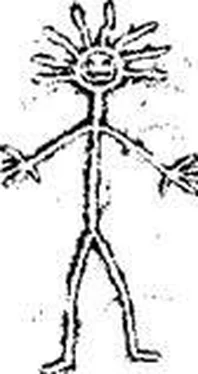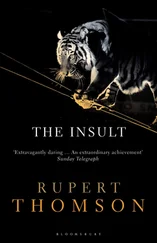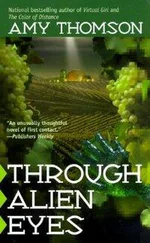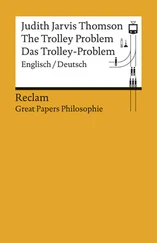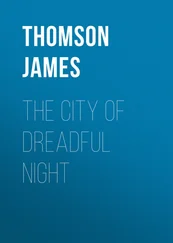The Color of Distance
by Amy Thomson
To Dr. Jane Smith, Dr. Robert Ireton, Dr. Jane Uhlir, and to the Swedish Hospital for saving my life. This book and all my subsequent work would not be possible without them.
Acknowledgments and sincere thanks are due to:
Eleanor Arnason, Octavia Butler, Mary Gentle, Ursula K. Le Guin, and Carol Severance, for their inspiration.
To my agent, Don Maass, and to my patient and long-suffering editor, Ginjer Buchanan, without whom this book would never have arrived in your hands.
To the friendly, professional, and helpful staffs of the Seattle Public Library, and the Suzallo and Odegaard Libraries at the University of Washington, who patiently helped me on all sorts of oddball quests for information.
To Dr. Gordon Baker and Jack Haldeman for information on anaphylactic shock.
To the Government of Costa Rica for their farsighted conservation of their rain forests, to Wildland Adventures of Seattle for helping me get to see the Costa Rican rain forests, and to Patricia Maynard for her help and enthusiasm while I was there.
To Jane Hawkins, Vonda Mclntyre, Andy Hooper, Kate Shaefer, and Steve Berry of the Novel Group Workshop, who saw this book pass before their eyes over and over and over again. Their insistence on excellence, accuracy, and good punctuation are what have helped bring out all that is good in this book.
To my second readers: Jon Singer, Ian Hageman, John Hecht, Edd Vick, Rich Dutcher, Ctein, Bruce McDanel, T-Om Seaman, Terry Garey, and Scott Barton. Their support, feedback, and ideas were endlessly helpful.
To Kim Graham for her wonderful reference sketch of the Tendu, and for her rendering of the stick figures in chapter 3.
To Anetta Pirinen for her lightning-fast Finnish translation and to the Ethiopian Community Mutual Association of Seattle for correcting my Amharic.
To Bruce Durocher for his encouragement, enthusiasm, and moral support.
To Margaret Organ-Kean and Kris Wheeler for emotional support during the final crunch.
And to Rosalie the Wonder Cat, who bore all of this book-writing nonsense with exquisite feline martyrdom.
Ani was gathering tender bibbi shoots when a patch of white on the distant forest floor caught her eye. She pointed it out to Kirito, and her sitik, Ilto. Curious, they climbed down to investigate.
The patch of white turned out to be two unusual animals lying on the forest floor. At first the two strange animals didn’t even seem to be alive. The white shell that covered them was made of something that had never lived. The covering was flexible, like the shell of a lizard’s egg, only much tougher. Kirito’s sharpest knife could barely cut through it.
The first creature they uncovered was dead. Kirito pierced its skin with a wrist spur, taking a few cells into her allu to see what kind of animal it was. Her ears lifted in astonishment. Pink with surprise and excitement, she beckoned urgently to Ilto. Kirito linked spurs with Ilto, sharing her discovery with him. He colored as excitedly as she had, and began helping Kirito free the other creature from its tough white covering.
Ani’s ears lifted in surprise. Ilto was rarely surprised or excited anymore. Over the past couple of years, he had become listless and apathetic. Her sitik’s withdrawal worried her. She was his bami. Ilto had chosen her from among all of the other tinka. He’d raised her, training her to fill his place in the tribe some day. But Ani wasn’t ready yet. She still needed him. She was afraid he would decide to die, leaving her unprepared to be an elder. Perhaps this new creature would restore his interest in life.
While Kirito and Ilto were busy cutting open the covering on the second animal, Ani examined the dead one. Its odd pinkish-tan skin was very strange—smooth, like hers, but dry like a lizard’s. It lacked any protective slime and was covered with sparse hair, like the fuzz of an ika flower. She had never seen an animal with fuzz on its skin before. She wondered what purpose it served.
Ani sank a wrist spur into the creature. It was even stranger inside than outside. Its cells made no sense at all, which was strange, since the corpse was very fresh. She should still be able to read its cells.
Ilto chittered quietly to get her attention. She looked up to see what he wanted.
“This one’s alive!” he said, the symbols flashing across his body almost too quickly to read. “Help us take this thing off its body!”
Puzzled, she helped them strip the covering from the second creature. This one was darker brbwn, with a finer, sparser covering of hair. It was smaller and more delicately built. Ilto lifted off the hard shell encasing its head. Underneath the masklike head-covering was a flat, uninteresting face with a fleshy nose like a bird’s beak, and a small mouth with fat, swollen lips. The hair on its head was thick and long.
Stripped, the creature was ugly and clumsy-looking. It was at least three hand-spans taller than any Tendu Ani had ever seen. Its thick, awkward feet had tiny, weak toes, useless for climbing. The creature’s blunt claws were as impractical as its absurd toes. It lay there, laboring for breath like a dying fish. How could such a poorly adapted animal manage to survive?
Wondering if its cells tasted as alien as those of its dead companion, Ani reached out to sample them with a wrist spur. Ilto caught her arm before she could pierce its skin.
“No,” he told her. “Let us make sure it’s safe first.”
“It’s going to die unless we stabilize it soon,” Kirito warned.
Ilto flickered agreement. “Which of us is going to do it?”
Kirito rippled blue-grey longing, then brown embarrassment at her selfishness.
Ilto held out a clenched fist and flushed faintly purple. They were going to kenja for the privilege.
They put their hands behind their backs, counted to four, then held out their hands. Kirito’s hand was cupped into the mouth position, Ilto’s fist was flattened into a leaf. Mouth eats leaf. Kirito had won the right to work with the new creature. A ripple of deep green satisfaction crossed her skin.
Ilto and Ani stood watching as Kirito linked with it. She concentrated hard, her nictitating membranes half-covering her blank, unfocused eyes. Gradually the creature’s labored breathing eased, and became steady.
Kirito removed her spurs from the creature, took a deep breath, and looked up at Ilto. “I’ve helped it a little, but I need to do some deep work to stabilize it. Will you monitor me?”
Ani’s ears lifted, this time in surprise. Deep work was dangerous. She remembered the first time she had attempted it. She had become so attuned to the bird she was working on that her heart began to lose its rhythm and her metabolism fluctuated wildly. Despite Ilto’s careful monitoring and rapid intervention, she’d been in a coma for a full day. It had taken six days for her body to return to normal. Now Kirito and Ilto were going to attempt deep work on a creature whose cells were unrecognizably bizarre. It was dangerous, even for them, the two most senior elders in the village. An orange-thread of fear flowed slowly down Ani’s back.
“Are you sure you want to do this, Kirito?” Ilto asked her.
“I’m ready,” she said. Her skin was a calm, resolved chartreuse. “Kiha can fill my place if I die.”
“So am I,” Ilto told her. “Ani is also ready to become an elder.”
The stinging stripes on Ani’s back tightened.
“No, siti. Not yet,” she pleaded, her words pale grey with dread. “There’s so much more to learn. I’m not ready yet.”
Vertical bars of negation flickered across Ilto’s chest. “If I die now, you’re ready to be an elder,” he told her, turquoise with pride and fondness. “Everything else I know you can learn for yourself.”
Читать дальше
